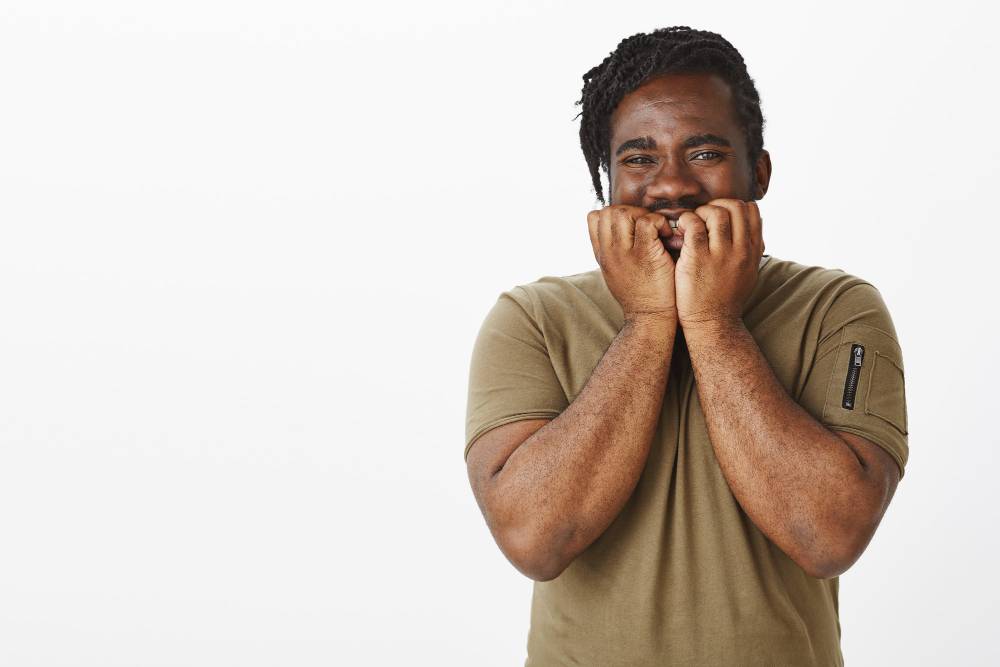Attachment styles are patterns of how people think, feel, and behave in relationships. These patterns begin to form during early childhood development, based on a child’s interactions with their primary caregivers, and they form the blueprint for how the child forms and maintains relationships throughout their life.
Your attachment style influences everything—from your choice of friends to the dynamics of your relationship and how you interact with your colleagues at work. Hence, recognizing and understanding your attachment style can significantly impact your personal development and lead to more rewarding interpersonal relationships.
In the next sections, I’ll introduce the attachment theory, each attachment style, what they look like in real time, and how they can influence your relationships and personal growth. This knowledge will help you navigate your personal and professional life more effectively.
What’s the Attachment Theory?
Attachment theory is a psychological and evolutionary theory focusing on human relationships, particularly between parents and children. It was first proposed by psychologist John Bowlby in 1958 and later expanded by Mary Ainsworth in 1978.
The attachment theory posits that children are biologically inclined to form attachments with their caregivers to survive. It also identifies the importance of secure emotional bonds that serve as a foundation for a child to explore the world and have a safe place to return to when they feel threatened or insecure. This foundation influences a child’s social, emotional, and cognitive development.
What are the Attachment Styles?
According to the attachment theory, there are four attachment types:
- Anxious
- Avoidant
- Disorganized
- Secure
The Anxious Attachment Style

The anxious attachment style (also called ambivalent attachment) develops in children with inconsistent or unpredictable caregivers. Such children learn to heighten their emotional responses to gain attention or response from their caregivers. They become hyper-vigilant about the availability of their caregiver, often displaying clingy, dependent, and aggressive behaviour.
An adult with an anxious attachment behaviour tends to exhibit the following behaviours:
- Has a strong fear of abandonment.
- Has low self-esteem.
- Struggles to trust partners despite a desire for close relationships.
- Frequent worries about their partner’s commitment and love.
- Is sensitive to partners’ actions and moods, often taking them personally.
- Appears jealous or clingy to a romantic partner.
- Overreacts to small disturbances in relationships.
- Tends to idealise partners and overlook potential red flags.
- Often, they seek to merge identities with their partner, losing personal boundaries.
- May exhibit controlling behaviours as a way to secure relationship stability.
- Experiences significant distress during relationship conflicts or breakups.
- Has difficulty being alone or independent.
The anxious attachment behaviour often leads to strained relationships, making it difficult for people to establish trust and maintain healthy boundaries. This can result in a constant need for reassurance and frequent conflicts, which can overwhelm partners, friends, and colleagues alike.
The Avoidant Attachment Style

The avoidant attachment style (aka dismissive attachment or anxious-avoidant attachment) develops in children with emotionally unavailable or inconsistent caregivers. Children with this attachment style learn to suppress their desire/need for closeness and intimacy to protect themselves from potential rejection or abandonment. They often develop a self-reliant attitude and learn to cope with their emotions on their own, rather than seeking comfort from others.
Suggested read: How to book for a couple’s therapy session on Mytherapist.ng
Adults with an avoidant attachment style may:
- Struggle to understand and express their emotional needs.
- Avoid vulnerability to prevent potential emotional hurt.
- Be reluctant to rely on others or ask for help.
- Find intimacy uncomfortable.
- Be emotionally unavailable.
- Fear being overwhelmed or controlled by their partners.
- Find it difficult to form and maintain deep emotional connections.
- Struggle to open up about personal experiences or past traumas.
- Avoid commitment or long-term relationships.
- Tend to withdraw emotionally in times of stress or conflict.
People with an avoidant attachment style may seem distant or emotionally detached in romantic relationships. They often struggle with intimacy and may avoid emotional conversations or expressions of affection. Although they desire connection, they may push people away when they feel vulnerable or overwhelmed, leading to a cycle of avoidance and emotional withdrawal in their relationships.
The Disorganised Attachment Style

The disorganised attachment style (fearful-avoidant attachment) develops in children with unpredictable or frightening caregivers. Due to their childhood experiences, they learn to navigate relationships with a mix of avoidant and anxious behaviours—a sense of confusion and uncertainty, as they were unable to rely on their caregivers for consistent support and reassurance. Consequently, this lack of a secure base can lead to difficulties trusting people and forming stable attachments in adulthood.
Adults with a disorganised attachment style usually exhibit these behaviours:
- Trust issues.
- Difficulty forming secure attachments.
- Fluctuating between seeking intimacy and withdrawing emotionally in relationships.
- Struggles with expressing emotions openly and setting clear boundaries.
- Fear of abandonment and rejection.
- Hypervigilance in relationships, often anticipating rejection or betrayal.
- A tendency to feel overwhelmed by emotional intensity.
- Disorganised thinking or behaviour during conflicts.
- Struggles with emotional regulation and coping with stress.
- Self-sabotage and pushing people away when feeling overwhelmed.
- A distorted sense of identity.
People with a disorganised attachment style often experience turbulence in relationships due to deep-seated insecurity and conflicting emotions. They have a deep fear of being rejected or abandoned by their loved ones, and this internal conflict can manifest in disorganised thinking and behaviours during conflicts. As a result, they struggle to establish a sense of security, stability, or trust in relationships.
The Secure Attachment Style

The secure attachment style develops in children who have consistent and responsive caregivers. They learn to trust that their needs will be met and have a sense of security in their relationships. This sense of safety allows them to develop a healthy sense of self and feel stable enough to explore the world.
As adults, individuals with a secure attachment style:
- Feel comfortable with intimacy.
- Can express their emotions openly.
- Maintain healthy boundaries while remaining emotionally available.
- Have a strong sense of identity and self-worth.
- Have confidence in their partners’ commitment and love.
- Handle relationship conflicts effectively without feeling overwhelmed.
- Feel secure in themselves and their ability to navigate challenges.
- Show consistency in their emotional responses and behaviours.
People with the secure attachment style approach relationships with confidence and ease, prioritising emotional connection while maintaining healthy boundaries. Their strong sense of identity and self-worth allows them to navigate relationships with security and trust in themselves and others, helping them build stable and fulfilling connections.
What if you have an insecure attachment style?
If you recognize an anxious, avoidant, or disorganised attachment style in yourself or your partner, know that you’re not doomed to repeat the same behavioural patterns forever. It’s possible to transform these patterns and develop healthier, more secure attachment styles. How?
- Communicate clearly and openly
Share your thoughts and feelings with your partner honestly. This will help you clearly understand each other’s needs and expectations. That level of honesty will also help you build intimacy, as you can express yourselves freely without fear of judgement. Over time, this foundation of trust and understanding can transform an insecure attachment into a more secure and healthy relationship.
Suggested read: The Cost of Therapy in Nigeria: What You Need to Know.
- Seek professional help
Whether it’s one-on-one or couples’ sessions with your partner, psychotherapy can be invaluable in helping you address and improve your attachment style. A therapist experienced in attachment theory will help you uncover the root causes of your attachment issues and learn practical skills to develop healthier attachment patterns. You can connect with a specialised therapist in attachment theory on mytherapist.ng’s mobile app.
- Practice self-compassion
Be kind to yourself as you unlearn unhealthy attachment patterns and learn new ones. Instead of criticising yourself, engage in positive self-talk and affirmations. This approach will help you develop a positive internal dialogue that creates a secure environment for growth and change.
- Build a strong support network
Surround yourself with reliable friends and family who understand and support your journey toward building secure attachment patterns. The journey won’t always be a walk in the park, and having a reliable support system during tough times can make all the difference.
- Set realistic expectations
Rome wasn’t built in a day (or a thousand years), so be patient with yourself on your journey. Understand that good, consistent progress takes time and effort, and it’s okay to face setbacks along the way. As long as you stay committed to your goal, you’ll see the results of your efforts.
Understand and improve your attachment patterns with Mytherapist.ng
Understanding your attachment style helps you understand why you act the way you do in relationships and guides you toward positive change. For tailored support in developing a secure attachment style, connect with an experienced psychotherapist on mytherapist.ng’s mobile app.
Frequently Asked Questions (FAQs)
Can attachment styles change over time?
Although attachment styles are relatively stable over time, they’re not permanent. They can change through personal growth, focused therapy, and conscious efforts to develop healthier relationship patterns.
How can I identify my attachment style?
You can identify your attachment style by seeking guidance from a mental health professional. With as low as 3k, mytherapist.ng’s mobile app will help you connect with qualified therapists.
Can I have a combination of attachment styles?
It’s possible to exhibit traits of multiple attachment styles, especially if your early caregiver was inconsistent, traumatising, and unpredictable. This combination is often called a “mixed” or “disorganised” attachment style.
How can I support a partner with an insecure attachment style?
To support a partner with an insecure attachment style:
- Have clear conversations with them to understand their needs and insecurities.
- Create a safe space for them to express their emotions without bias or judgement.
- Validate their feelings, but encourage them to set healthy boundaries and drop unhealthy habits.
- Most importantly, encourage them to seek therapy for a deeper understanding of their attachment style and tailored support.
Is it possible to have a secure attachment style in some relationships and an insecure attachment in others?
It’s possible to display different attachment styles in different relationships, depending on various factors, like how safe you feel, your level of trust and intimacy, and the quality/dynamics of the relationship.
Suggested read: What to Expect During Your First Therapy Session.
Can attachment styles affect professional relationships?
Attachment styles can influence how you interact with colleagues, supervisors, and clients. An insecure attachment style may pose challenges like an intense fear of rejection, conflict avoidance, or difficulty trusting others.
Do attachment styles affect mental health?
Attachment styles can influence the state of your mental health. Secure attachment is associated with better psychological well-being, while insecure attachment styles are linked to higher levels of anxiety and depression.
How to Harness The Healing Power of Therapeutic Writing.
Next articleImproving mental health through code–a software engineer’s perspective





